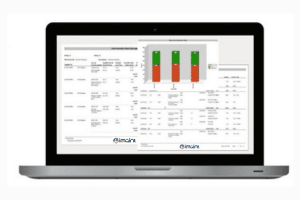The maintenance strategy that you follow has a significant impact on your company’s bottom line, but many maintenance managers have trouble selecting an appropriate strategy or overlook their approach altogether. It’s important to develop a mix of different strategies to properly maintain your assets and ensure that they remain in working order. There are three basic types of maintenance strategies:
- Preventive
- Reactive
- Predictive
Unfortunately, some organizations wait until a component fails before they take action to repair or replace it. All assets require periodic maintenance to continue running efficiently. Finding the appropriate balance of maintenance approaches is key to minimizing asset downtime and repair costs while maintaining a safe environment for workers.
Preventive Maintenance
Preventive maintenance is maintenance that takes place before something breaks down. It is a time-based or meter-count based approach that is carried out at predetermined intervals to reduce failure risk or performance degradation of assets. The aim of preventive maintenance is to minimize unplanned downtime and reduce repair costs. Preventive maintenance cannot always prevent asset failure, however.
Reactive Maintenance
Reactive maintenance, also known as the run-to-failure strategy, is when you take action after an asset fails. Since you only spend money when something breaks, the reactive maintenance approach might seem cheaper—but it costs you more in the long run. Reactive maintenance shortens the life of assets and may cause them to break down more frequently. When you are in reactive maintenance mode, most of your daily maintenance activities are driven by unforeseen problems.
Predictive Maintenance
Predictive maintenance is a condition-based approach to maintenance. Rather than servicing assets on a fixed schedule, you evaluate the condition of components to determine whether they need to be serviced. Predictive maintenance is suited to your largest, most expensive and most complex assets. It should be combined with preventive maintenance for the best results. Examples of predictive maintenance include oil analysis, thermal analysis and vibration analysis.
Tips for Optimizing Your Maintenance Strategy
Benefits of optimizing your maintenance strategy include extending asset life, reducing asset failures, minimizing repair costs and improving health and safety. Start by assessing your current maintenance strategy to identify its strengths and weaknesses. Assign a maintenance strategy to each asset you have based on its level of criticality.
Assets that have a high consequence of failure are considered highly critical assets. Monitor the condition of highly critical assets continuously with a predictive maintenance plan to protect them and predict failures. Assets of low-to-mid-level criticality should be monitored with preventive maintenance.
A run-to-failure strategy (reactive maintenance) can be used for assets that aren’t considered essential. Reactive maintenance should only be used if the consequence of failure is so low that it makes sense to allow the asset to fail, rather than spend valuable maintenance time performing predictive or preventive maintenance tasks.
Most companies find that they have to use a combination of predictive, preventive and reactive maintenance strategies for the best results. When implementing a maintenance strategy, it’s important to have a computerized maintenance management system (CMMS) or enterprise asset management (EAM) software solution in place to track your work and schedule. Documenting the condition of your assets with maintenance management software over time also enables you to identify opportunities for improvement and increase efficiency. To try out DPSI’s best-of-breed software, sign up for a free trial today!




